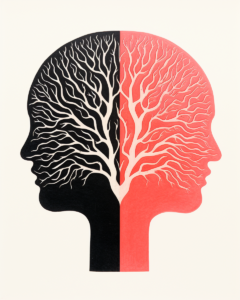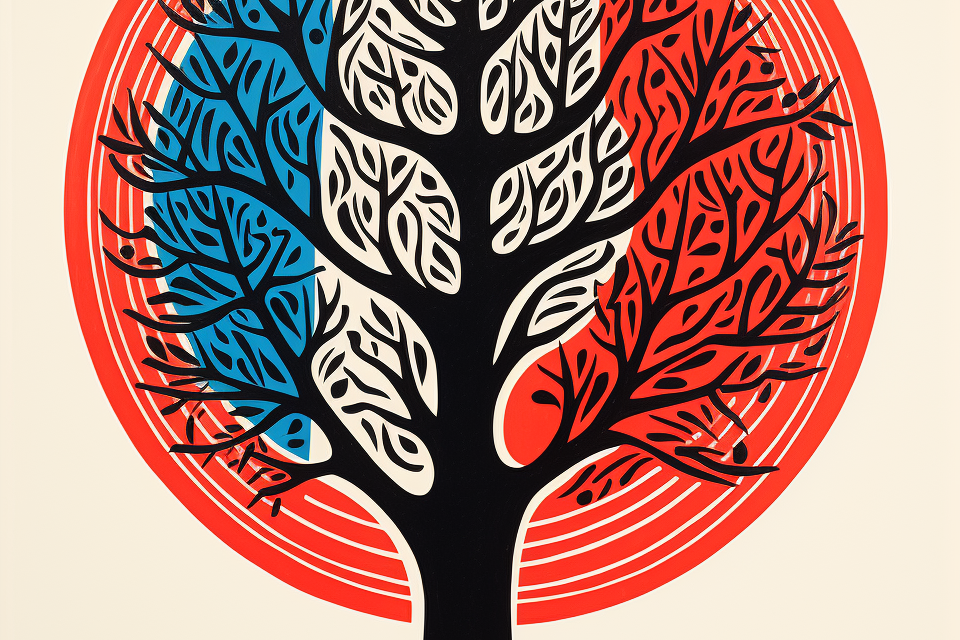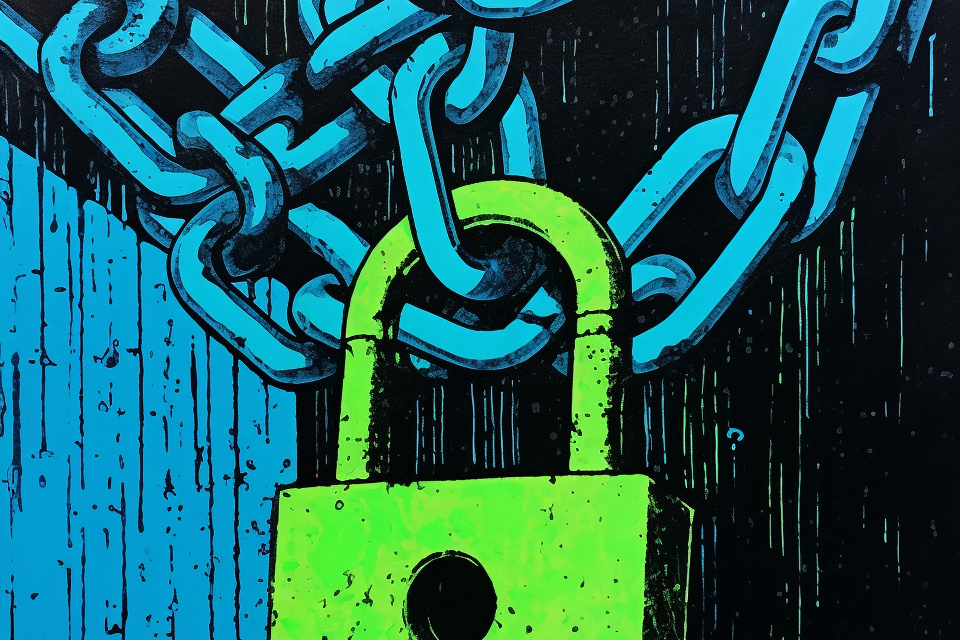Abundance and Scarcity: Exploring Two Paradigms

Few issues in human psychology are as fundamentally contrasting as abundance and scarcity. These terms stretch beyond their literal meanings to encapsulate a worldview that can shape every facet of our lives, from relationships and finances to goal-setting and decision-making.
The Power of Abundance and Scarcity
Abundance invites us to focus on the plethora of opportunities and resources at our fingertips, offering an optimistic stance toward the boundless possibilities ahead. Scarcity, conversely, hones in on constraints, limitations, and the finite nature of what life offers. It’s a viewpoint tinged with the belief that there’s never enough to go around—like a pie with only so many slices.
Our society often oscillates between these extremes, glorifying a life of luxury as the pinnacle of human achievement, filled to the brim with perpetual happiness and prosperity. Scarcity, conversely, is typically stigmatized as a mindset leading to pessimism, rivalry, and social discord. Though these societal perceptions may be skewed, they do shed light on the deeper beliefs and biases that often steer our individual and collective behavior.
Unveiling the Nuances: Exploring Pros and Cons
The objective of this discourse is not a simple one: to dissect these two paradigms and uncover the nuances that elevate them above mere buzzwords. We’ll explore the pros and cons of both abundance and scarcity mindsets, revealing how each can either propel us forward or hold us back. We’ll also examine ways to strike a balance between the two, forging a nuanced worldview that leverages the strengths of both perspectives. By the end of this exploration, you’ll be better equipped to reassess your own outlook on life, armed with the insights needed to cultivate a mindset that harmonizes with your pillars of personal growth.
Historical Foundations: From Scarcity to Abundance
Throughout human history, the concepts of wealth and scarcity have not only shaped civilizations and individual psychologies but have also steered the course of global events. Far from being modern constructs, these paradigms have roots extending back to humanity’s earliest days.
For instance, early human groups grappled with scarcity in fundamental areas like food, shelter, and safety. These existential challenges led to social structures that prioritized resource allocation and community safeguarding.
Scarcity’s imprint on human behavior is deeply significant. About 10,000 years ago, the advent of agriculture transformed our relationship with scarcity, enabling food storage and, consequently, larger and more stable communities. This shift also gave rise to social hierarchies and divisions rooted in resource control.
Fast forward to the Industrial Revolution, and you find another pivotal moment where scarcity—or the perception thereof—fueled competition, innovation, and economic expansion. Many societal norms, whether we’re aware of it or not, were conceived with the underlying principle of scarcity in mind—from the notion of private property and competitive markets to certain frameworks of social and political governance.
History provides us with compelling examples of communities sculpted by either abundance or scarcity. Take the islanders of pre-contact Hawaii. Their culture prioritized communal living and a profound spiritual bond with nature, all while existing in an environment rich with fish, fruits, and fertile land. Contrast that with the Spartans of ancient Greece, whose culture was profoundly shaped by the scarcity of arable land, leading them to establish a society focused on discipline, efficiency, and conquest.
Yet it’s crucial to understand that neither abundance nor scarcity solely define a community; rather, these are fluid landscapes upon which cultures evolve and adapt. Some civilizations, like the Roman Empire, even transitioned from scarcity to abundance, accompanied by shifts in cultural values, objectives, and structures.
Grasping this historical context enriches our contemporary conversations about abundance and scarcity. It becomes clear that these are not just individual perspectives but deeply embedded worldviews that have influenced—and continue to influence—how we engage with the world and with one another.
The Psychological Bedrock: Abundance and Scarcity Mindsets
Peeling back the layers of cultural norms and historical developments allows us to explore the psychological bedrock of abundance and scarcity. These mental frameworks guide not just our actions but also deeply influence our personal relationship with the world. Let’s kick off this inquiry by focusing on the psychology of scarcity.
Scarcity thinking often takes root in childhood, where resources—be it emotional support, financial stability, or even basic necessities like food—were limited. These formative experiences leave a lasting imprint, shaping an individual’s psychological terrain around the idea of ‘never enough.’ This mindset manifests in multiple facets of personal development, leading to a competitive nature, elevated anxiety, and cognitive tunneling—where focus narrows obsessively on immediate concerns, neglecting long-term planning. Seen through the lens of self-awareness and emotional health, scarcity thinking can act like a straightjacket, constraining one’s full potential for growth.
Conversely, an abundance mindset usually emerges from environments that offer a sense of stability, adequacy, and potential. Messages that validate one’s self-worth and capabilities often cultivate this perspective. This mindset can yield a host of positive outcomes, both for the individual and the community. Those with an abundance mentality tend to be more collaborative, creative, and receptive to new experiences. They are also better equipped to handle setbacks with resilience and grace, viewing them as temporary hurdles rather than insurmountable obstacles. From a developmental perspective, this mindset creates a fertile ground for both personal and societal advancement.
Empirical research supports these observations. Studies show that scarcity can impair cognitive function, as if the brain is working with limited bandwidth. When fixated on immediate deficits, people’s decision-making and long-term planning are compromised, perpetuating cycles of scarcity. Conversely, research on abundance indicates that even when resource levels are identical, those with an abundant outlook exhibit greater creativity, reduced stress, and an enhanced sense of well-being.
A growing body of academic research is expanding our understanding of the psychological aspects of abundance and scarcity, offering fresh insights. Acknowledging the power of these mindsets on both our personal and collective lives serves as a leverage point. It opens up the possibility of rewiring our thinking, nurturing a perspective that not only fuels personal growth but also has the potential to reshape societal structures in a more inclusive and holistic manner.
Economic Implications: Scarcity and Abundance in Action
Scarcity and abundance aren’t just psychological constructs; they fundamentally steer economic mechanisms. Traditional economics hinges on the scarcity assumption: finite resources versus infinite human desires. This cornerstone concept informs everything from pricing structures to labor markets and government policy. It’s the rationale behind supply and demand curves, competition, and economic systems that prioritize efficiency and resource distribution.
In contrast, some economic theories challenge the scarcity-centric view and explore the notion of abundance. The economics of abundance shifts the focus from rationing scarcity to generating value. Digital goods, which can be virtually replicated at minimal cost, disrupt conventional economic logic. The narrative transitions from a zero-sum contest to an expanding ecosystem where the pie can truly enlarge for everyone involved. This holds especially true in knowledge-based sectors like technology and renewable energy, where the marginal production cost can inch toward zero.
For real-world context, we can examine case studies from diverse global economies. Nations rich in natural resources, such as Qatar and Norway, may experience a form of abundance. The challenge lies in sustainably managing these resources while ensuring a diversified economy. Conversely, resource-limited countries like Japan and Singapore leverage human capital and technological innovation to prosper, effectively sidestepping their natural constraints. Each situation offers its own blend of hurdles and opportunities, illuminating how scarcity and abundance perspectives can manifest on a national or even global scale.
The role of technological innovation in this dialogue is crucial. From the internet democratizing information access to advancements in renewable energy reducing costs, technology continually expands the boundaries of what’s considered ‘scarce.’ Innovations in fields like agriculture, manufacturing, and medicine are recalibrating the balance, making goods and services more accessible and thereby challenging legacy economic models rooted in scarcity.
In summary, the principles of scarcity and abundance are deeply embedded in economic thinking and operation. While scarcity has long been the traditional economic foundation, guiding our grasp of value and resource distribution, the rapid pace of technological innovation is rendering abundance increasingly feasible. This transformation has implications that stretch beyond economics, affecting societal well-being, ethical considerations, and, undoubtedly, human development.
Impact on Media and Marketing: Leveraging Scarcity
The interplay between abundance and scarcity isn’t just a theoretical concept or an economic model; it’s a lived reality that influences our daily decisions, behaviors, and collective consciousness. One arena where this tension is palpable is in media and marketing. The advertising industry has mastered the art of leveraging scarcity to shape consumer behavior. Tactics like limited-time offers, exclusive memberships, or even the glamorization of hustle culture capitalize on our fear of missing out, fostering a worldview based on scarcity and competition.
Paradigms of Abundance and Scarcity
Conversely, there are societal systems that champion the ideals of abundance. The rise of the sharing economy, seen in platforms like Airbnb and Uber, democratizes asset ownership and promotes more efficient, communal resource use. Similarly, the open-source movement in software development operates on the belief that information sharing accelerates innovation and collective progress. These models challenge traditional ideas of exclusive ownership and competitive edge, offering a window into what an abundance-centric society might resemble.
The environmental consequences of these diverging viewpoints are noteworthy and carry global implications. Natural resource extraction, often justified by a scarcity mindset, leads to environmental degradation, including deforestation, soil erosion, and biodiversity loss. Conversely, adopting an abundance perspective in managing natural resources can encourage more sustainable practices. This entails a shift from linear consumption models, which deplete resources, to circular ones that recycle and regenerate. Examples of this change include sustainable agriculture, renewable energy, and conservation efforts, all of which harmonize human prosperity with ecological well-being.
Education also plays a pivotal role in shaping these paradigms. Instilling an abundance mindset early on can serve as a counterbalance to societal messages that emphasize scarcity. Curricula that prioritize collaboration over competition, problem-solving over rote memorization, and critical thinking over mere information absorption can raise a generation better equipped to engage the world from a place of abundance. Innovative educational initiatives are increasingly incorporating aspects like mindfulness, emotional intelligence, and a global perspective, laying the groundwork for a more abundant future.
Transitioning to an Abundance Mindset
Personal development might be the most empowering realm for understanding the tension between scarcity and abundance. After all, how we see the world fundamentally shapes our experiences and opportunities. So, how does one intentionally transition from a scarcity mindset to an abundance perspective?
Firstly, focus on gratitude. By actively cherishing what you currently possess, you create a space for attracting more. And this isn’t just about material things; it also encompasses opportunities, relationships, and even the challenges that provide invaluable lessons. Another strategy is cultivating a growth mindset, seeing challenges as avenues for learning rather than threats. This requires reframing your mental scripts, replacing self-defeating thoughts with empowering affirmations or constructive self-talk.
Mindfulness practices like meditation and journaling can further nurture an abundance mindset. These activities provide a pause, a respite from the constant noise and demands of daily life, allowing for introspection and a sharper focus on what truly matters. Being around people who share an abundance perspective can also be transformative. Attitudes are infectious; we’re deeply influenced by the company we keep.
The Benefits of an Abundance Mindset
The benefits of adopting an abundance mindset aren’t just theoretical; they manifest in tangible, real-world outcomes. This outlook correlates with increased happiness, reduced stress, and greater resilience. With an abundance perspective, you become more receptive to opportunities, more willing to share and contribute, and less confined by the limiting beliefs that inhibit creativity and problem-solving.
To fully appreciate the power of this shift, consider real-life success stories where an abundance mindset was the linchpin. Take Sara Blakely, the inventor of Spanx, for instance. With no background in fashion or retail and countless rejections, Blakely viewed each setback as additional experience, propelling her to become the world’s youngest self-made female billionaire. Or look at Elon Musk, who personally invested in Tesla and SpaceX when both faced bankruptcy. Even amid looming scarcity, he operated from a viewpoint of abundant possibilities.
Remember, embracing an abundance mindset is a continuous journey, not a one-off act. It requires regular self-reflection, active realignment, and the courage to step out of your comfort zones. But for those who take the plunge, the rewards aren’t just plentiful; they’re transformative. And in a society grappling with increasing polarization, inequality, and existential concerns, cultivating an abundance mindset may be essential not only for personal success but also for collective well-being.
Implications of the Abundance vs Scarcity Debate
In the long run, the implications of the abundance vs scarcity debate are far-reaching and profound. Imagine a world where the majority adopts an abundance perspective. We’d likely witness a stronger focus on sustainability, as an abundant mindset encourages responsible resource usage and sharing. This could catalyze more progressive legislation around climate change, conservation, and renewable energy. Moreover, socioeconomic disparities might lessen, as an abundance mindset promotes a more equitable distribution of opportunities and resources, acting as an antidote to systems built on competitiveness and accumulation.
However, it’s crucial to address the challenges and criticisms associated with promoting an abundance mindset. Critics argue that emphasizing abundance could lead to complacency or downplay structural issues that result in genuine scarcity. It’s not a panacea, and its effectiveness can vary by context. It’s vital to blend idealism with pragmatism, recognizing that while mindset is a potent tool, it can’t single-handedly overcome systemic inequities or resource limitations.
In the business world, cultivating an abundant culture at the organizational level can offer extensive benefits, impacting not just profitability but also employee well-being, innovation, and long-term sustainability. Fostering a culture that prioritizes collaboration over competition, values transparency, and invests in employee growth helps build such an environment. When people feel valued and empowered at work, they naturally align more closely with an abundance mindset, generating both individual and organizational success.
Looking ahead, several factors could influence the future trajectory of the abundance vs scarcity discourse. For one, technological advancements, especially in AI, renewable energy, and biotechnology, will increasingly challenge traditional notions of scarcity. In an era where technology has the potential to create abundance, we may need to reexamine what ‘limited resources’ really mean. Secondly, as younger generations come of age—known for their commitment to social justice and environmental concerns—the cultural shift towards abundant thinking could gain momentum. Lastly, we may see the emergence of new economic models and philosophies that aim to reconcile the tension between scarcity and abundance in more nuanced ways.
Conclusion: Shaping Our Collective Future
The exploration of abundance and scarcity isn’t merely intellectual; it serves as a blueprint for our collective future. The stakes are high, but so are the rewards. It’s essential to navigate this terrain with eyes wide open, acknowledging both the limitations and possibilities each perspective offers. The intricate balance between abundance and scarcity will continue to shape our world, and the legacy we leave for future generations hinges on our mindful engagement in this ongoing process.
The debate over abundance versus scarcity isn’t merely an intellectual exercise; it’s a pivotal axis on which our personal lives, social dynamics, and global institutions turn. Understanding how these contrasting perspectives shape everything from economic models to interpersonal interactions helps us navigate the complexities of our world. It transcends the simple notion of seeing a glass as half-full or half-empty; it’s about comprehending how that viewpoint shapes your interactions with the world and, reciprocally, how the world engages with you.
Developing an abundance mindset serves not just individual well-being but also fuels societal cohesion and advancement. When we embrace life with an abundance mindset, we’re more inclined to contribute, collaborate, and find solutions that uplift the broader community. This mindset has the potential to be a driving force in tackling some of the most pressing challenges of our era, from social inequality to environmental degradation.
Now comes the transformative part: you have the capacity to analyze and shift your mindset. Ask yourself, in what aspects of your life does scarcity thinking prevail? Where could adopting an abundance perspective make a meaningful difference? Take time to reflect on these questions. Engage in dialogue with friends or jot down your thoughts in a journal. Then, take that crucial next step: enact small adjustments based on your newfound insights. Even modest changes can ripple out, fostering a more abundant existence for yourself and, by extension, shaping a world that mirrors these ideals.
This isn’t merely an intellectual exercise. It’s a call to action to be an intentional architect of both your reality and our collective future. Every day, with each decision, you’re presented with a choice between abundance and scarcity. Choose wisely, for your choices not only set the course of your own life but also influence the trajectory of our global community.



